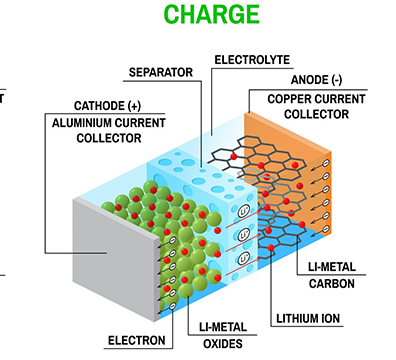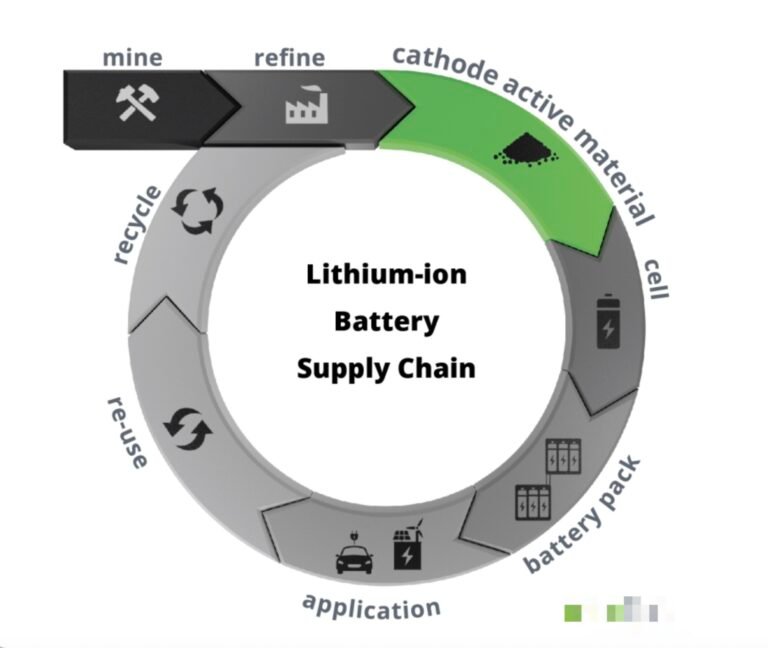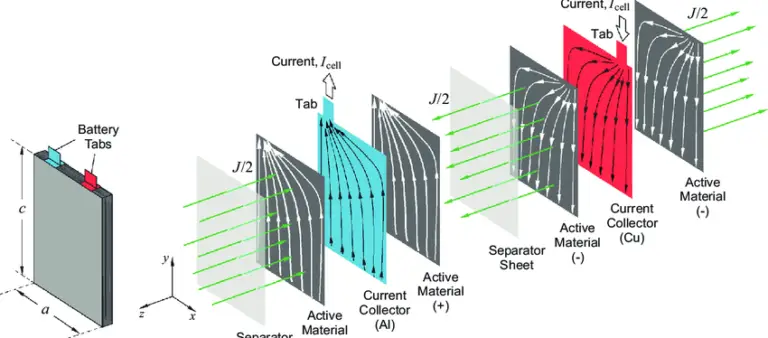Self discharge method
Self-discharge methods of lithium batteries: static and dynamic!

Lithium-ion battery self-discharge measurement methods are mainly divided into two kinds: 1) static measurement method, the self-discharge rate is obtained by standing the battery for a long time; 2) dynamic measurement method, the battery is realized in the dynamic process through parameter identification.
Static measurement
At present, the mainstream lithium-ion battery self-discharge measurement method is to stand the battery for a long time under certain environmental conditions, and measure the change of battery parameters before and after standing to characterize the self-discharge degree of the lithium-ion battery. According to different measurement parameters, static measurement is mainly divided into three categories: capacity measurement, open circuit voltage measurement and current measurement.
- Capacity measurement
Before the battery rests for a long time, charge and discharge the battery once, and record the discharge capacity Q0 before the rest. After standing still, use the same method to discharge the battery, and record the discharge capacity Q after standing still.

According to formula (7), the self-discharge rate η of the battery can be calculated. Then charge and discharge the battery once in the same way, and record the discharge capacity Q1 of the battery after the cycle. According to formulas (8) and (9), the reversible self-discharge capacity Qrev and irreversible self-discharge capacity Qirr of the battery can be calculated respectively. A schematic diagram of the method is shown in Figure 1.

Figure 1 capacity measurement method
In the battery test manual issued by the international standardization organization and relevant government departments and industry associations of various countries, relevant provisions are made on the detection of battery self-discharge through capacity measurement: “Containing alkaline or other non-acid electrolytes batteries, and those batteries: Portable secondary lithium batteries and storage battery packs” issued by the International Electrotechnical Commission (IEC). (IEC 61960) stipulates that the batteries in the state of 50% SOC should be stored at ambient temperature (20±5)°C for 90 days, and the battery life after recharging the discharge capacity should not be less than 85% of the rated capacity. The specific measurement process is shown in Figure 2a. The electric vehicle battery test manual issued by the United States Council of Automotive Research (USCAR) stipulates that the actual power corresponding to the battery working range should be measured before the measurement. After discharging 50% of the available power of the battery at a C/3 rate, store it at an ambient temperature of 30°C for 30 days, and measure the discharge capacity of the battery after recharging. The “Performance Requirements and Test Methods for Traction Batteries for Electric Vehicles” (GB/T 31486) issued by the National Standardization Administration of China is relatively similar to the IEC standard, and specifies the measurement and test procedures for charge retention and capacity recovery capabilities. Taking the room temperature test as an example, when the battery is stored at room temperature for 8 days, it is required that the charge retention rate is not lower than 85% of the initial capacity, and the capacity recovery is not lower than 90% of the initial capacity. The specific measurement process is shown in Figure 2b.

- OCV measurement
The OCV measurement characterizes the self-discharge degree of the lithium-ion battery by directly measuring the change of the OCV during the static process of the battery. The advantage of this method is that it is relatively simple and time-consuming is less which compared with the measurement capacity; the disadvantage is that for lithium-ion batteries (such as LFP batteries) with a long voltage platform on the OCV-SOC curve, in a large SOC range, The battery voltage changes little, and it is difficult to characterize the degree of self-discharge by measuring the OCV, that is, this method has a certain scope of application.
- Current measurement
Lithium-ion batteries are charged with a small current to keep the voltage of the battery constant, and the charging current value when it is stable is the self-discharge current. According to Zimmerman’s research, the tiny current may not be stable for several months, and the stabilization time of different designs of batteries is also different, and the generally recommended measurement time is at least one week.
This method has similar problems with the method of measuring the OCV, that is, for lithium-ion batteries with a long voltage plateau, the effectiveness of this method is challenged. In addition, since the self-discharge current of lithium-ion batteries is extremely small, generally C/50000 or lower, to apply and measure this small-scale current requires high requirements for experimental equipment.
Sazhin et al. made certain improvements to the above-mentioned conventional static current measurement method, using an electrochemical workstation to apply a constant voltage lower than the OCV to the battery, and simultaneously measure the current flowing in the circuit, there is no self-discharge and there is self-discharge the current-time curve of the battery is shown in Fig. 3a.

Figure 3 Part lab result of Sazhin current measure way
The measurement time can be shortened by actively applying a constant voltage, controlling the cell to a state of equilibrium, and measuring the current flowing in the circuit during this process. In addition, the zero current crossing point (CZCP) can also be used as a parameter to characterize the self-discharge rate. As shown in Figure 3b, the logarithm of the time tCZCP when the current Isc reaches zero is positively correlated with the logarithm of the self-discharge resistance Rself.
However, this method also has a relatively serious shortcoming, that is, it requires high precision of experimental equipment. The voltage resolution of the electrochemical workstation used in the experiment is 100uV (in the 14.5V range), and the current resolution is 1pA (in the 200nA range).
On the whole, the above three methods are very time-consuming, and the experimental time span ranges from one day to dozens of days. The shortening of the measurement time in the current measurement scenario requires high equipment costs.
Dynamic measurement method
The dynamic measurement method is to realize the parameter identification of the battery in the dynamic process. In order to shorten the measurement time, save space resources and human resources, researchers have also made many attempts. One method is to speed up the self-discharge rate by changing conditions such as ambient temperature and battery SOC, so that the measured parameters can have relatively large changes in a short period of time. Although this method saves the experiment time, it also accelerates the aging of the battery and increases the damage to the battery. It is only suitable for laboratory research and is not suitable for large-scale application in actual production. Another method is to introduce a self-discharge resistor based on the existing relatively mature equivalent circuit model of lithium-ion batteries, and measure the self-discharge rate of lithium-ion batteries in the dynamic process through different parameter identification methods.
[4-5] used the automatic system identification theory to simplify the lithium-ion battery into a first-order resistance-capacitance (R-C) equivalent circuit, and applied the same charge and discharge current to the lithium-ion battery and the equivalent circuit, according to the output voltage The difference adjusts the parameters of the equivalent circuit until the difference between the two approaches zero, and the self-discharge resistance value of the lithium-ion battery is obtained. The total measurement time required by this method is about 12h. However, in this method, the battery is equivalent to a passive circuit, and the influence of the change of the battery state of charge on the output voltage during the experiment is not considered.
Schmidt et al. [6] simplified the battery to the equivalent circuit shown in Figure 4. Among them: Rp,i is the electrochemical reaction resistance, Cp,i is the electric double layer capacitance, Rself is the self-discharge resistance, C is the equivalent capacitance of the battery. By applying a short-time current pulse to the lithium-ion battery, measuring the voltage change during the subsequent standing process, and further analyzing the self-discharge resistance value. This method only considers the reaction that plays a leading role in each stage during standing, decoupling the complex reaction mechanism, reducing the calculation amount and shortening the measurement time.

Fig. 4 Equivalent circuit of lithium-ion battery used in [6]
Specifically, the restoration of overvoltage plays a leading role in the initial period of quiescence, and the self-discharge of the battery plays a leading role in the end of quiescence. The time constant of self-discharge can be analyzed through the data at the end of the static period, and then the voltage drop caused by self-discharge during the overvoltage recovery period can be compensated to solve the equivalent capacitance of the battery, and finally obtain the self-discharge resistance value. This method can obtain the self-discharge resistance of the lithium-ion battery within 10-48 hours, which saves a lot of time compared with the traditional method, but it still needs to consume a lot of standing time to observe the stage where self-discharge plays a leading role.
Ouyang et al. [7] divided the impact of short circuit in the battery into two categories, namely parameter effect and consumption effect. Among them: parameter effect means that due to the existence of short-circuit resistance, the measured open circuit voltage and internal resistance have a certain deviation from the real value; consumption effect means that due to the existence of short-circuit resistance, the energy stored in the battery is continuously consumed, and the battery SOC continues to decline , which will lead to a certain deviation in the actual value of the open circuit voltage and internal resistance of the battery relative to the normal value.
In the battery difference model shown in equations (10) and (11): Ei is the open circuit voltage of the battery, Ri is the internal resistance of the battery, Ui and I are the measured battery voltage and current, respectively. The values of ΔEi and ΔRi are obtained by using the recursive least squares method, and finally the abnormal parameters exceeding the threshold are identified by statistical methods, so as to determine whether the battery has an internal short circuit. When the short-circuit resistance is 100Ω, this method can realize the identification of internal short-circuit within 4h43min at the fastest.

The above three dynamic measurement methods simplify the lithium-ion battery by introducing equivalent circuits and other means, and use innovative experimental methods to analyze the self-discharge resistance value, and have made great progress in shortening the measurement time.
Summarize
The measurement methods of static measurement and dynamic measurement of the self-discharge rate of two types of lithium-ion batteries are reviewed, and the main conclusions drawn include the following three points:
- The side reactions occurring at the negative electrode/electrolyte and positive electrode/electrolyte interfaces are the main source of self-discharge of lithium-ion batteries. Self-discharge can be suppressed by modifying the surface of the positive electrode and adding additives to the negative electrode and electrolyte. happened.
- During the storage of the battery, try to avoid being in an SOC state that is too high or too low, and the ambient temperature and humidity should be kept in a relatively low range.
- The current mainstream self-discharge measurement method is static measurement based on long-term static experiments. The biggest problem with this type of method is that the measurement time is too long, resulting in a huge waste of space and human resources. Researchers have proposed some dynamic measurement methods combined with equivalent circuit models for parameter identification, and these methods have made some progress in shortening the measurement time. Through innovative experimental design, the decoupling and identification of self-discharge in the dynamic process is the key path and development direction for the rapid measurement of self-discharge in the future.
From LIBA







